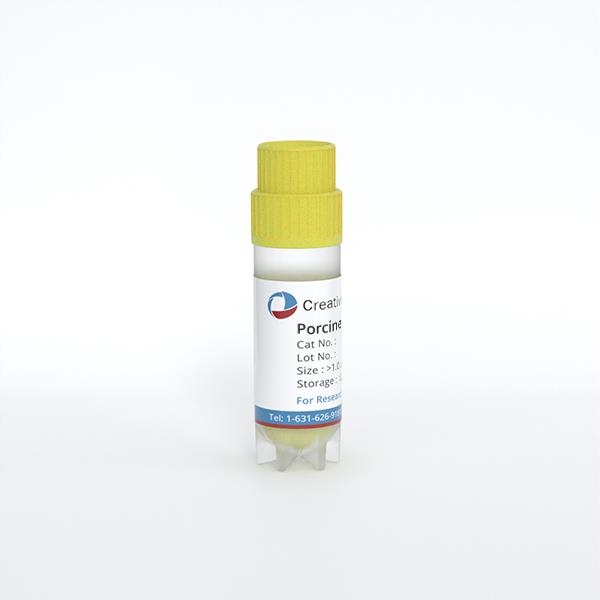Description
Porcine Lung Fibroblasts from Creative Bioarray are isolated from porcine lung tissue. Porcine Lung Fibroblasts from Cretive Bioarray are grown in T75 tissue culture flasks pre-coated with gelatin-based coating solution and incubated in Creative Bioarray Culture Complete Growth Medium generally for 3-7 days. Cultures are then expanded. Prior to shipping, cells are detached from flasks and immediately cryo-preserved in vials. Each vial contains at least 0.5x10^6 cells per ml and is delivered frozen.
Quality Control
Porcine Primary Lung Fibroblasts are tested for negative expression of von Willebrand Factor Expression/Factor VIII, cytokeratin 18, and alpha smooth muscle actin. Porcine Primary Lung Fibroblasts are negative for bacteria, yeast, fungi, and mycoplasma. Cells can be expanded for 3-5 passages at a split ratio of 1:2 under the cell culture conditions specified by Creative Bioarray. Repeated freezing and thawing of cells is not recommended.
Storage and Shipping
Creative Bioarray ships frozen cells on dry ice. On receipt, immediately transfer frozen cells to liquid nitrogen (-180 °C) until ready for experimental use.
Never can cryopreserved cells be kept at -20 °C.
Citation Guidance
If you use this products in your scientific publication, it should be cited in the publication as: Creative Bioarray cat no.
If your paper has been published, please click here to submit the PubMed ID of your paper to get a coupon.
What is the current formulation of cell cryopreservation solution?
At present, cell freezing mostly uses DMSO dimethyl sulfoxide or glycerol as a protective agent, and there are many kinds of cell freezing solution formulations, such as medium: serum: DMSO = 7:2:1 or 8:1:1 or 5:4:1, or directly with serum: DMSO = 9:1, and generally a high concentration of serum helps to maintain cell viability, and the survival rate of resuscitation is more than 80% to 90%.


